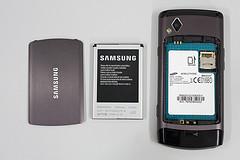The biggest problem for the GPS receiver is the so-called "cold start". It was at this moment is search for satellites, almanac and ephemeris entry. Depending on external factors, the process may be delayed start, that not only causes discomfort, but also leads to increased energy consumption. A-GPS technology helps to cope not only with this problem, but few make life easier for GPS receiver. The term A-GPS (Assisted GPS) means the operation GPS-receiver, in which a part necessary to produce the calculations and determine the location information (almanac, ephemeris, approximate estimation of Doppler shift) is transmitted to the GPS-receiver-band, eg via GPRS. In addition, the ISP provides A-GPS service can receive satellite data from the GPS device client, process it and return to ready position. There may be other uses of this technology, but it depends on your provider (operator) provides A-GPS.
In order to use A-GPS, it is necessary that this technology is supported by the third party, such as mobile operator, as exchange of data is not directly with the satellite and terrestrial wireless networks. In this regard, as a rule, A-GPS is not a free service. The cost depends on the specific operator or region. For example, some Nokia smartphones to support A-GPS, Nokia Maps application has already prescribed by the access point to provide the service A-GPS, the default server supl.nokia.com. Thus, in this case Nokia is acting as a provider of A-GPS services.
Service until free of charge, and you only pay for internet traffic in a mobile network operator, a communication session for about 5-6Kb on both sides. The main advantage of technology A-GPS is better TTFF time and a higher rate of GPS-receiver, as to calculate the coordinates and downloading of satellite data (almanac, ephemeris, etc.) requires much less time. Another advantage of using A-GPS is the energy savings, increased battery of the navigation device. Terminology. Almanac Data (Almanac). Set of data on the orbits of satellites and the health of all the constellations, transmitted by each satellite in its navigation message. The almanac data is used in GPS receiver to quickly find and 'capture' satellite signals directly after turning it on. An updated version of a ground station downloads the almanac is valid for 28 days. TTFF (Time To First Fix). Time to first positioning. The time that is spent on the GPS receiver since its incorporation until the first issue of the origin. Doppler Shift (Doppler shift). The difference between the frequencies of received and emitted signals proportional to the velocity mutual approach (removal) of the receiver and transmitter. Ephemeris (Ephemerides). Precomputed coordinates of the satellite in orbit, ie forecast its movement in space and time. To calculate the current time user GPS receiver based on the ephemeris data (Ephemeris Data), contained in the satellite navigation message. Ephemeris Data (ephemeris data). The information transmitted in the satellite navigation message, and it is used in GPS receiver for calculate the exact coordinates of the satellite. A set of ephemeris data is valid for a few hours.
 True, headset must be connected in both cases, it traditionally serves as the antenna. Extend the core functionality of the Samsung Wave can with applications from third-party developers. We would like to say that all you need to mass in the phone is initially the program will be needed for specific tasks. For example, someone needs a scientific calculator, someone – an application for measuring the performance of the apparatus, etc. All of this You can download the online shop Samsung Apps, which launched in Ukraine on June 15. Programs are divided into categories, a list of popular programs. Also provided on the division of paid and free prilizheniya. Service like Android Market and
True, headset must be connected in both cases, it traditionally serves as the antenna. Extend the core functionality of the Samsung Wave can with applications from third-party developers. We would like to say that all you need to mass in the phone is initially the program will be needed for specific tasks. For example, someone needs a scientific calculator, someone – an application for measuring the performance of the apparatus, etc. All of this You can download the online shop Samsung Apps, which launched in Ukraine on June 15. Programs are divided into categories, a list of popular programs. Also provided on the division of paid and free prilizheniya. Service like Android Market and